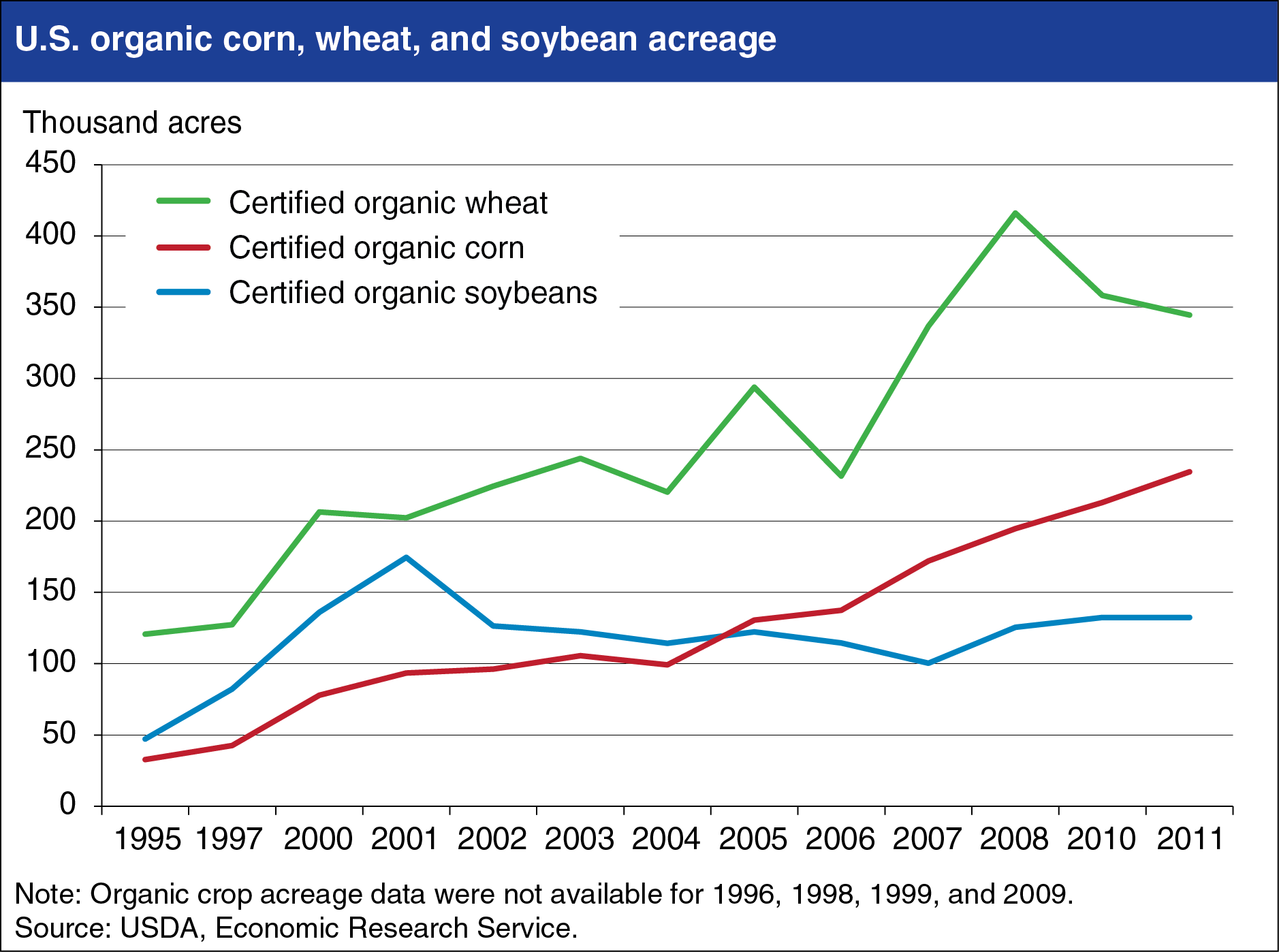Growth in certified organic field crop acreage has been rapid, but uneven
- by William D. McBride
- 7/28/2015

U.S. crop acres under USDA certified organic systems have grown since the National Organic Program was implemented in 2002. Organic crop acres increased from about 1.3 million in 2002 to almost 3.1 million in 2011, and part of this growth was in major field crops: corn, soybeans, and wheat. Among these 3 crops, certified organic production of corn increased the most, from about 96,000 acres in 2002 to 234,000 acres in 2011. Certified organic soybean acreage peaked at 175,000 acres in 2001, before falling to 100,000 acres in 2007 and rebounding to 132,000 acres in 2011. Wheat has the largest number of organic acres, starting at 225,000 acres in 2002 and peaking at more than 400,000 acres in 2008, before falling to 345,000 acres in 2011. Much of the increased organic corn production has been to support a rapidly growing organic dairy sector. Higher prices for conventional corn, soybeans, and wheat since 2008 and somewhat slower demand growth for organic products due to the economic recession, along with increasing imports of these crops, may have limited the growth in organic field crop acreage in recent years. This chart is from the ERS report, The Profit Potential of Certified Organic Field Crop Production, July 2015


